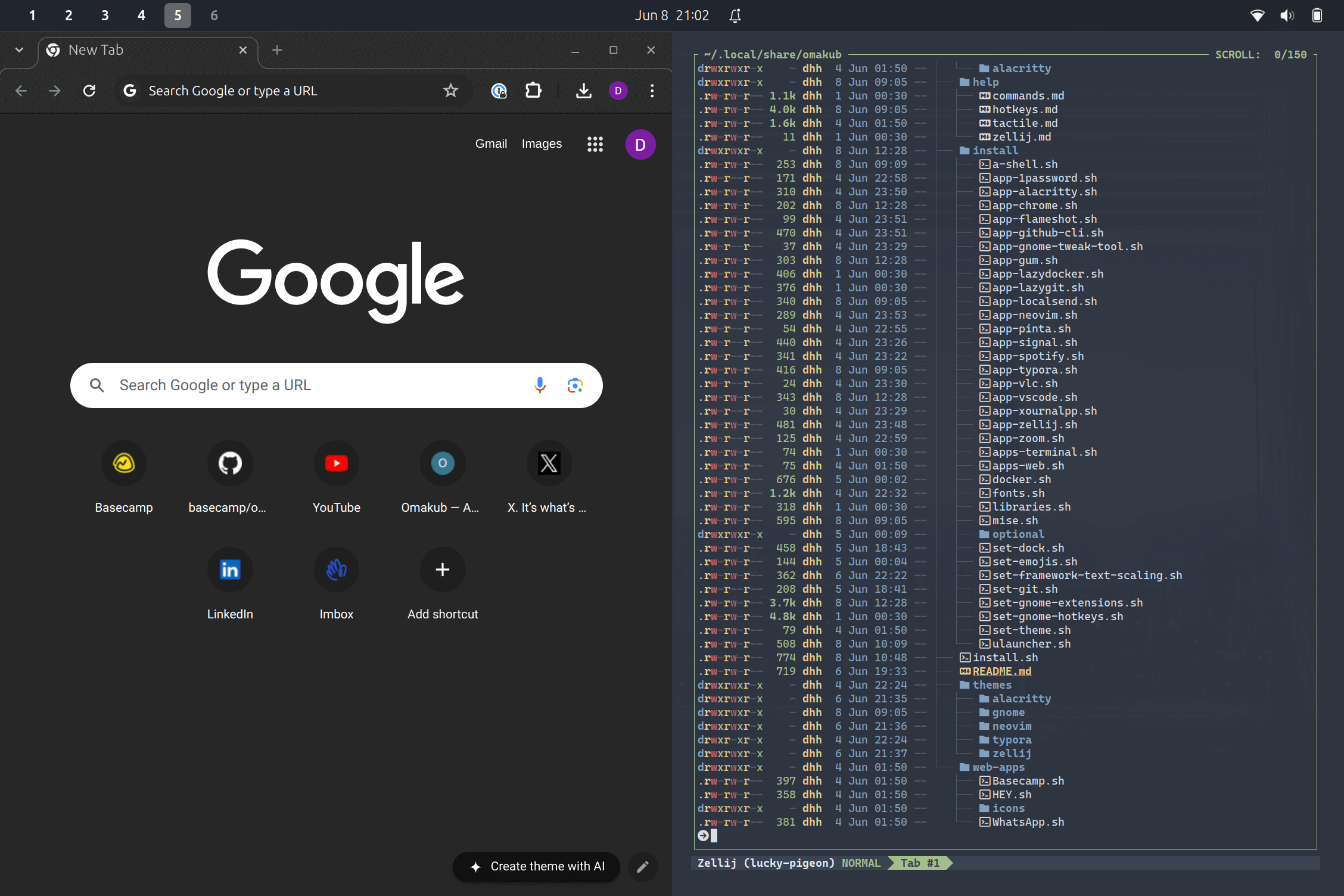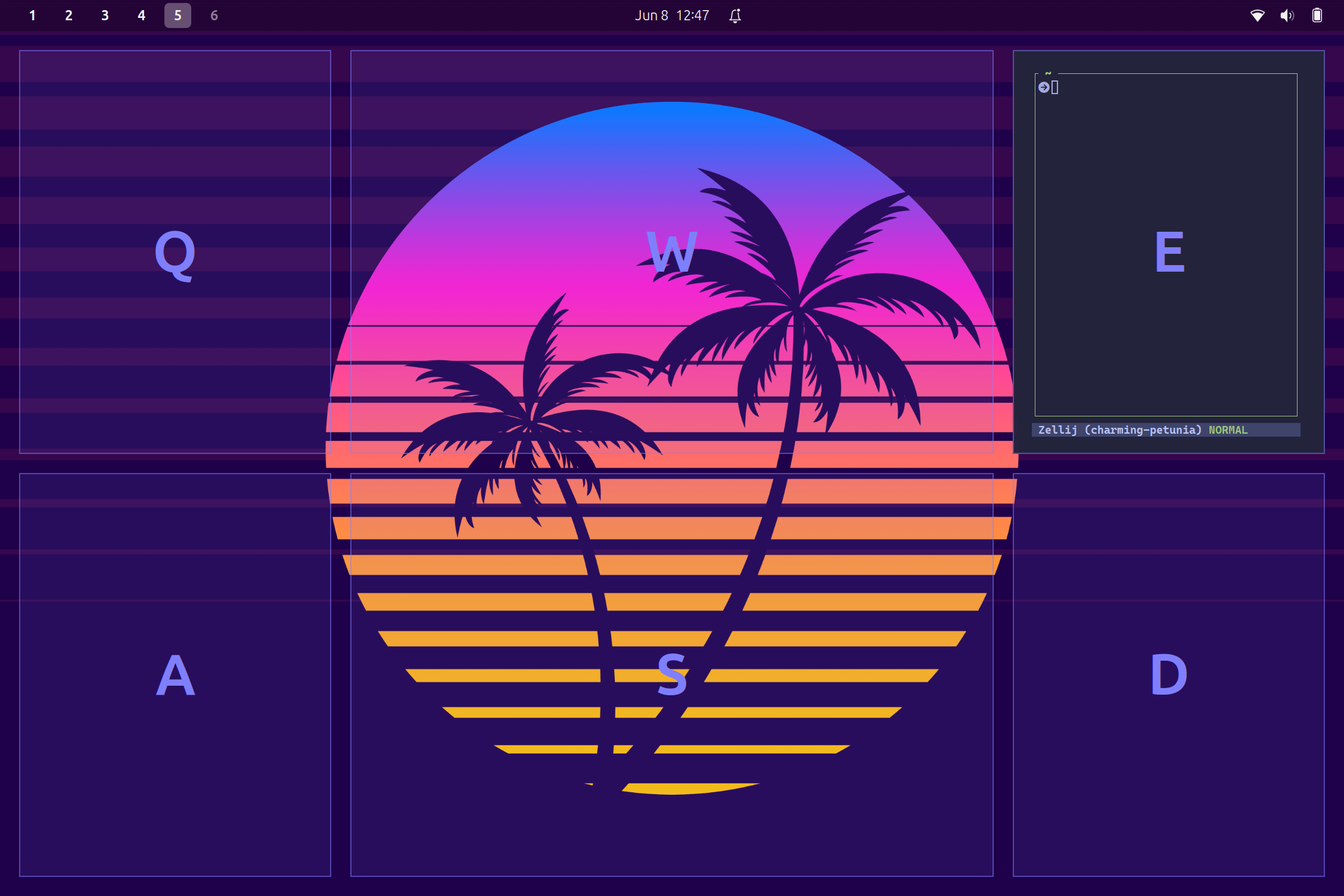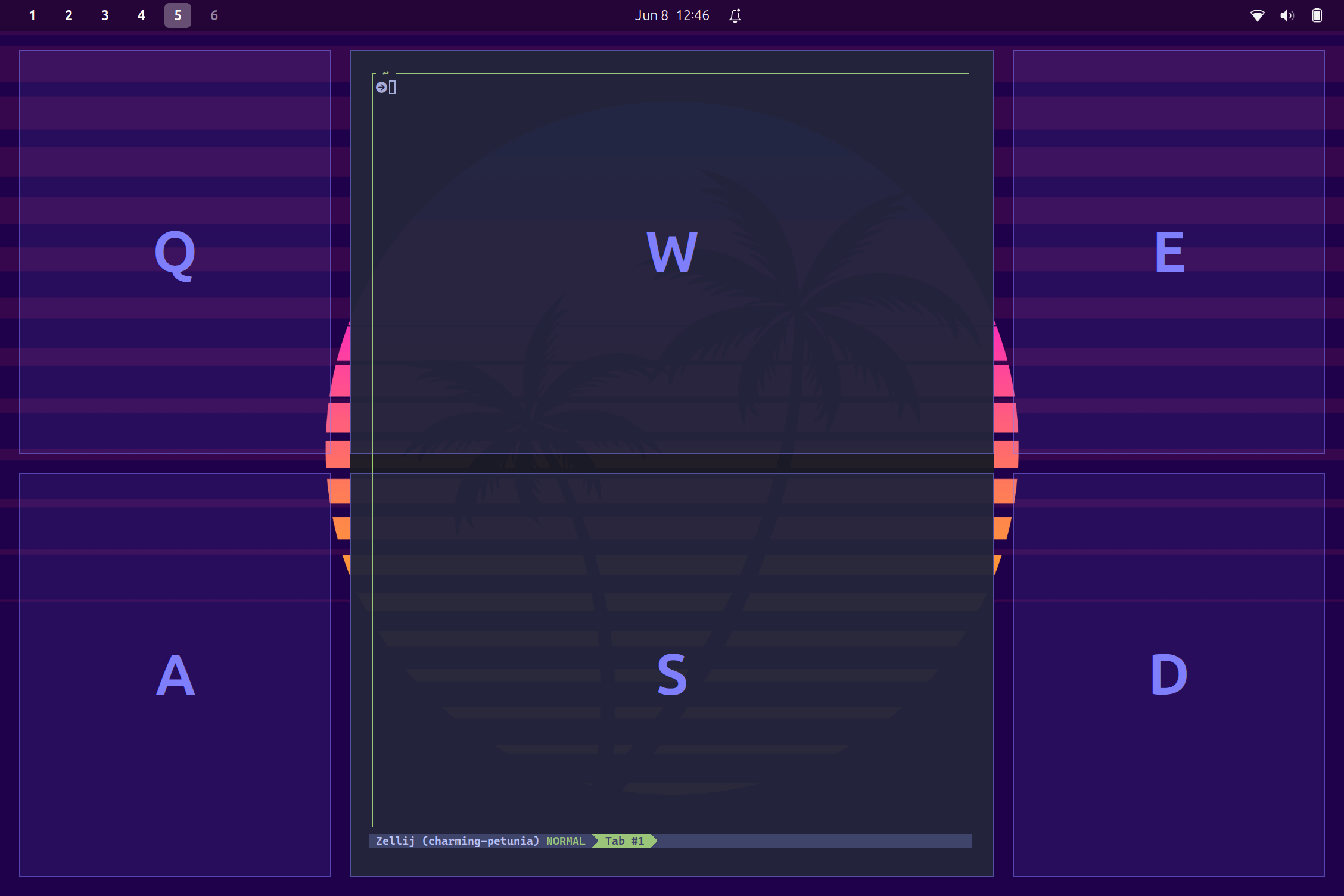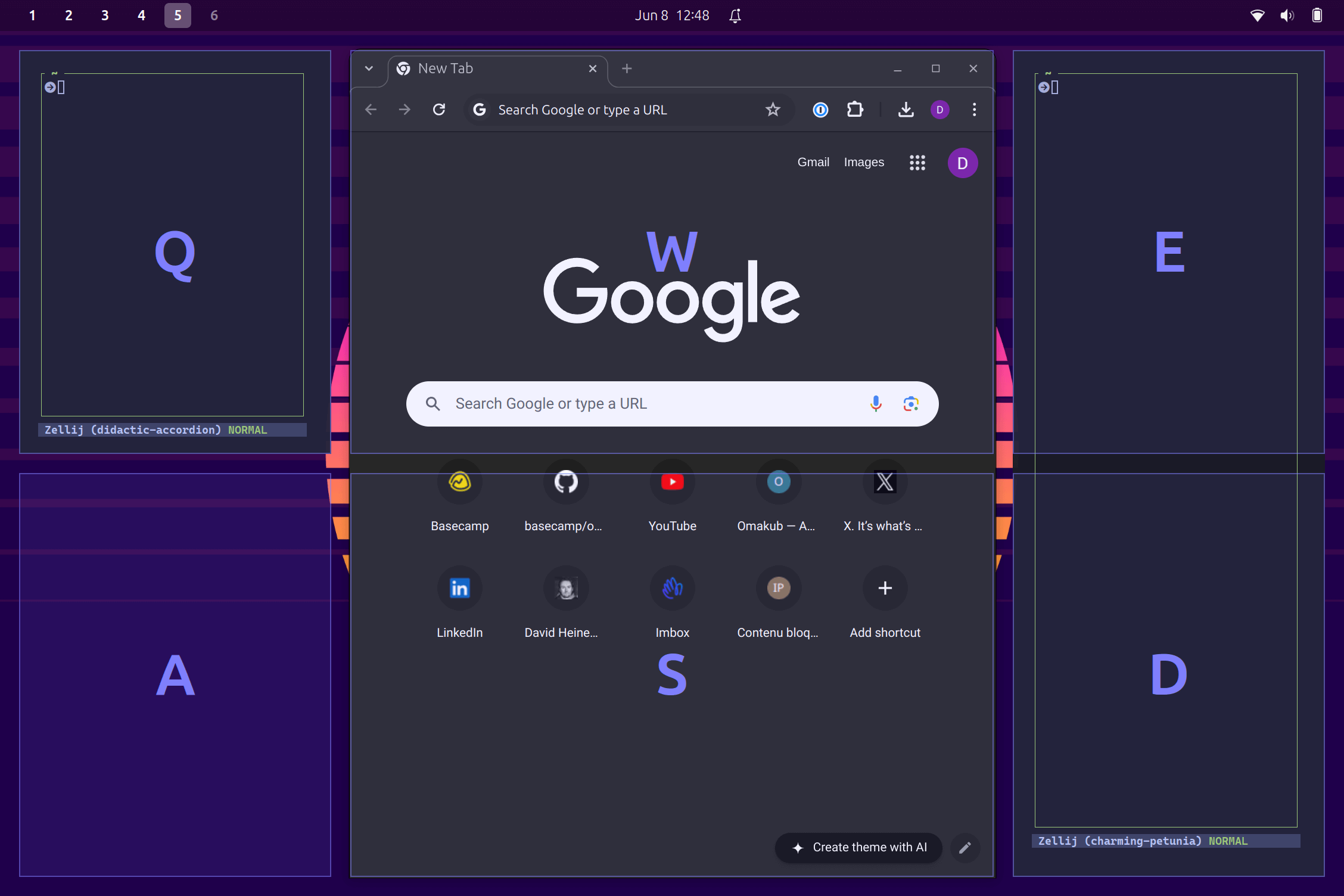Tiling
Gnome comes with a simple two-way tiling setup that works great for small laptop screens that can't fit more than a pair of apps side by side anyway. While on an active app, press Super + Left Arrow to fill up the left half of the screen, and Super + Right Arrow to fill up the right. You can use Super + Up Arrow to fill the entire desktop (without hiding the top panel showing the clock).
Here's an example of aligning a browser and a terminal side by side. Depending on the aspect ratio of your laptop, this can definitely work too, if you don't like the one-app-per-workspace regime:
Advanced tiling with Tactile
On bigger screens, you'll likely want more than just two applications side by side. That's where Tactile comes in. It splits the screen into 6 different regions by default. A center with two large slots, and two wings, each with two smaller slots. You can place any window in any slot or span it across multiple slots. It's really simple and powerful.
To activate Tactile, press Super + T. You'll see the grid outlined:
In that example, there's only one application, the Terminal, and it's assigned to the E slot. Let's expand it to fill both center slots using Super + T W S:
And finally, here's an example using two terminals of varying height, and a browser in the center:
Moving windows manually
While you should get into the habit of moving most of your windows around with the keyboard most of the time, there are occasions where a little manual action is needed. For windows with a title bar, you just click and hold there to move. But for windows without one, like the Alacritty terminal, you can hold Super down, click and hold anywhere inside the window, and then move it with the mouse. (This also works on windows with title bars!).



